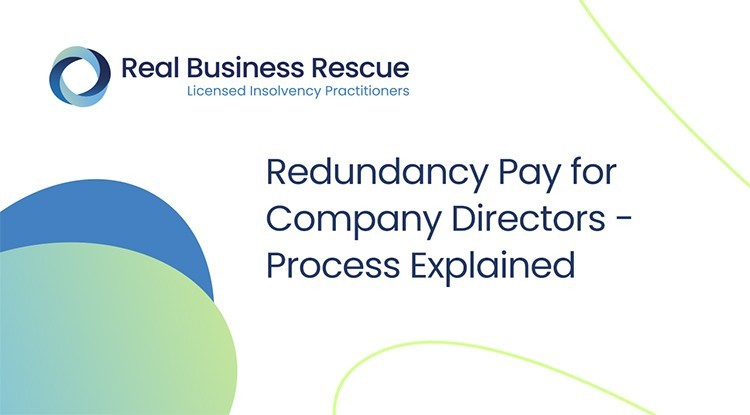Small Business Closing Employee Rights UK: Ensuring Fair Redundancy Pay
Small Business Closing Employee Rights UK: Ensuring Fair Redundancy Pay
Blog Article
Checking Out the Operational Characteristics of Firm Redundancy and Its Long-Term Sustainability

Redundancy Techniques for Company Connection
In order to ensure uninterrupted procedures, businesses should execute efficient redundancy methods for business continuity. Redundancy in this context refers to the duplication of vital elements or functions within a system to alleviate the influence of prospective failings. By integrating redundancy methods, organizations can enhance their durability versus disruptions created by numerous factors such as all-natural catastrophes, equipment failures, or cyber-attacks.
One common redundancy strategy is the implementation of backup systems and information storage remedies. This involves developing duplicates of important information and systems that can be turned on in instance of a key system failure. Furthermore, organizations can establish repetitive interaction channels and power resources to maintain connection and operations throughout unanticipated occasions.
In addition, cross-training workers to perform several functions within the firm can function as a useful redundancy technique. If vital workers are not available due to disease or various other reasons, this makes certain that essential jobs can still be carried out even. On the whole, efficient redundancy techniques are crucial for companies to maintain functional continuity and reduce the effect of possible disruptions.
Impact of Redundancy on Business Resilience
Provided the important function redundancy strategies play in ensuring company connection, exploring the effect of redundancy on business strength becomes vital for recognizing the alternative operational characteristics of a business. Business resilience describes an entity's ability to adapt to interruptions, recoup from setbacks, and change when needed while maintaining core functions. Redundancy, when purposefully carried out, can substantially add to improving an organization's strength despite unanticipated difficulties. By having back-up systems, personnel, or procedures in position, firms can much better withstand shocks and continue operations with marginal disruption.
Furthermore, redundancy can bolster staff member spirits and self-confidence, knowing that there are backup strategies in position to resolve unpredicted situations. This complacency can cause raised performance and a much more favorable work atmosphere. Furthermore, redundancy can promote technology and creative thinking within a company as workers feel empowered to take computed dangers, knowing that there is a safety and security web to support them in instance of failing. In general, the influence of redundancy on business strength is extensive, forming the lasting sustainability and success of a business.
Stabilizing Effectiveness and Versatility in Redundancy
Attaining a harmonious equilibrium in between functional efficiency and adaptive adaptability is a pivotal challenge in the calculated release of redundancy within companies. As well much flexibility without a strong functional foundation can result in inefficiencies and inconsistency.
To stabilize performance and adaptability in redundancy preparation, organizations have to very carefully assess their functional demands, market characteristics, and tactical objectives. Inevitably, discovering the right equilibrium between efficiency and flexibility is vital for building a resistant and sustainable company in the face of unpredictability.
Long-Term Sustainability Via Redundancy Preparation
To make certain enduring viability and stability, companies should purposefully align their redundancy planning with long-lasting sustainability objectives, therefore integrating functional effectiveness with adaptive versatility. Lasting sustainability with redundancy preparation includes greater than just short-term cost-cutting steps. It requires a thorough strategic approach that anticipates future obstacles and opportunities. Business must view redundancy not as a responsive remedy to instant troubles but as an aggressive approach for lasting success. By incorporating redundancy preparation with sustainability purposes, companies can create a resistant structure that can endure different market fluctuations and internal adjustments.

Proactive Steps for Lasting Business Procedures
Exactly how can business proactively boost their operational sustainability for long-term success? Implementing proactive steps is essential for business intending to guarantee lasting operations.
Moreover, cultivating a culture of continual enhancement and learning within the organization can improve flexibility to altering market problems and customer demands. Encouraging staff member participation in decision-making procedures and giving possibilities for professional advancement can boost spirits, performance, and total performance. Establishing clear goals, monitoring essential efficiency indications, and regularly assessing progression are crucial elements of positive sustainability management.
Teaming up with suppliers, consumers, and various other stakeholders to advertise lasting techniques throughout the supply chain can produce a ripple result of positive impact - redundancy pay if company goes bust. By taking aggressive steps towards functional sustainability, business can develop durability, drive advancement, and protect their long-lasting success in an ever-evolving service landscape
Verdict

In the world of organizational monitoring, the critical implementation of firm redundancy stands as a pivotal yet detailed practice that necessitates a delicate balance in between operational effectiveness and long-lasting practicality. By studying the operational dynamics that underpin business redundancy and evaluating its broader ramifications for organizational resilience and adaptability, a nuanced understanding of exactly how redundancy techniques can shape the future trajectory of a company starts to unravel.Given the important role redundancy techniques play in guaranteeing service connection, discovering the impact of redundancy on organizational strength ends up being read here critical for understanding the holistic functional characteristics of a business. Generally, the effect of redundancy on organizational durability is profound, forming the long-lasting sustainability and success of a company.
In final thought, comprehending the functional dynamics of firm redundancy is vital for making like this sure lasting sustainability.
Report this page